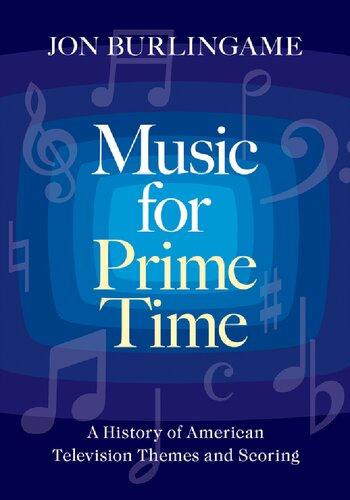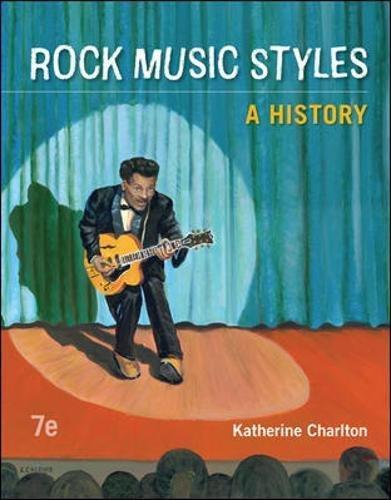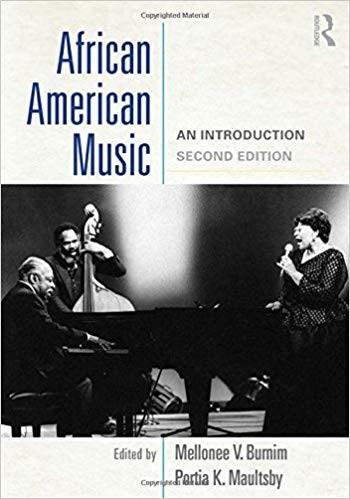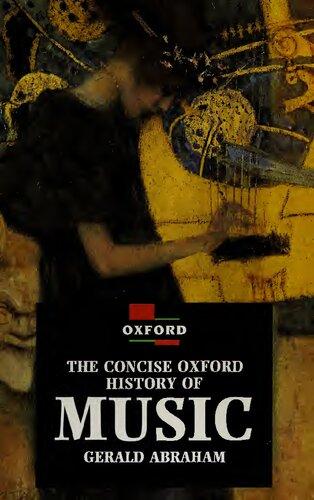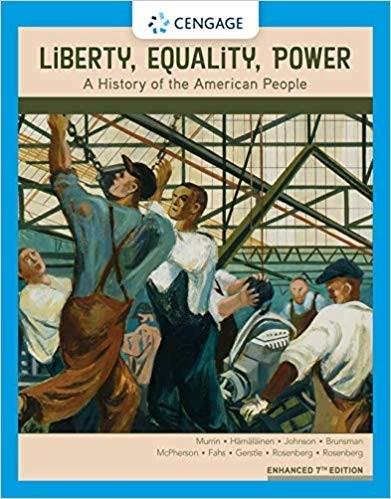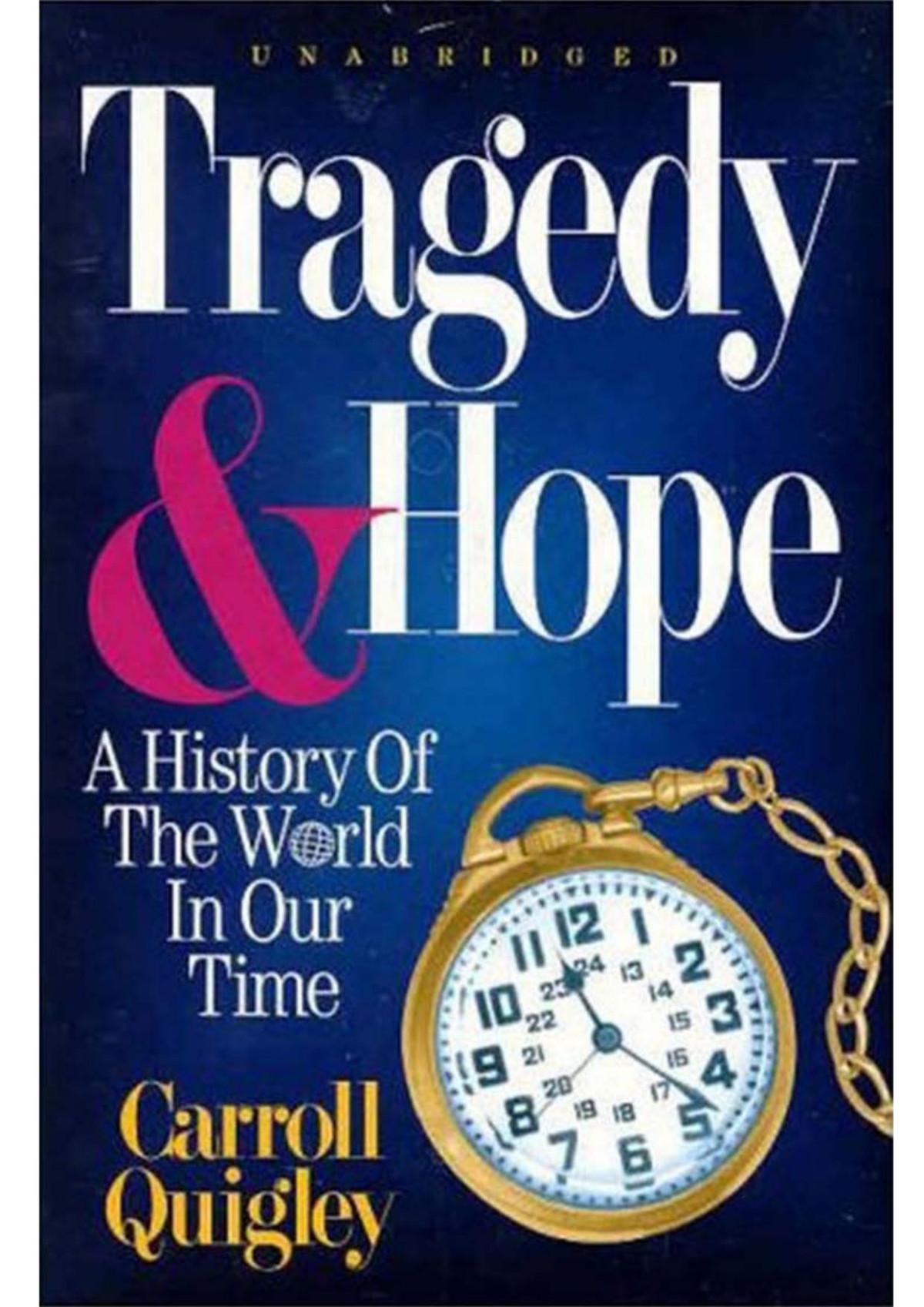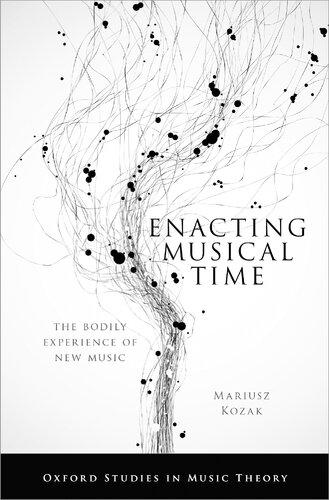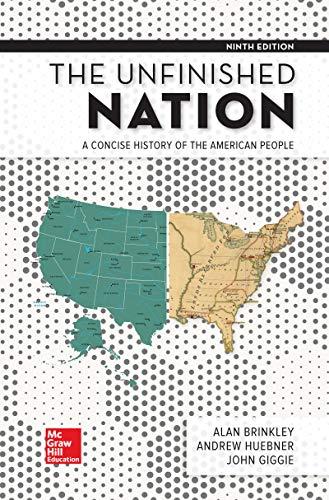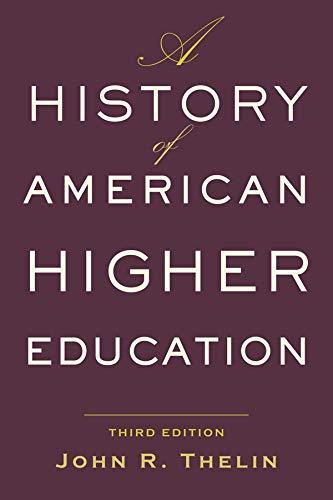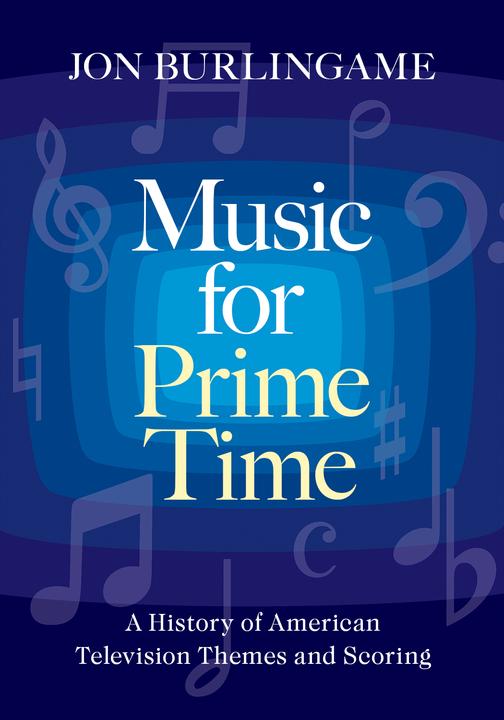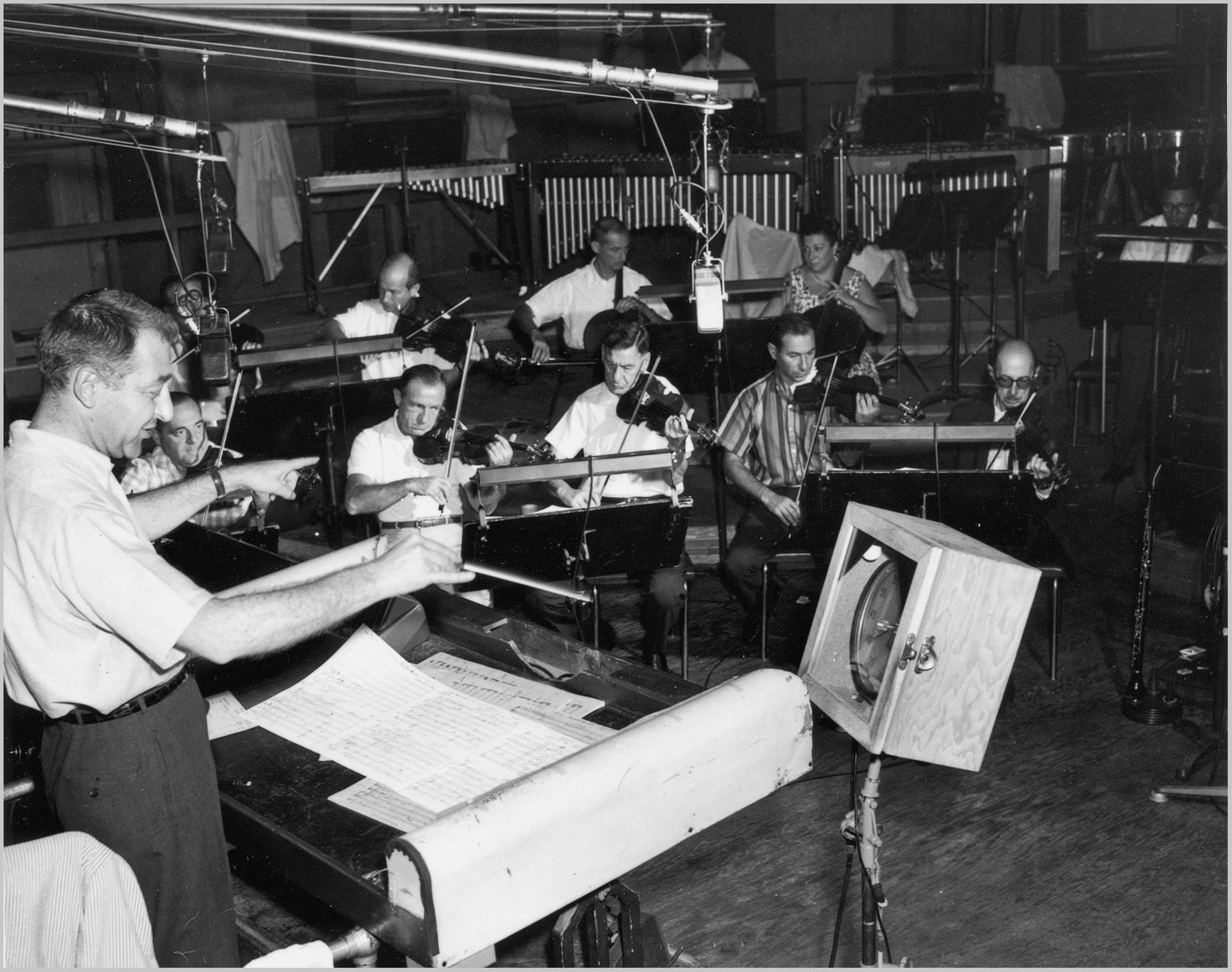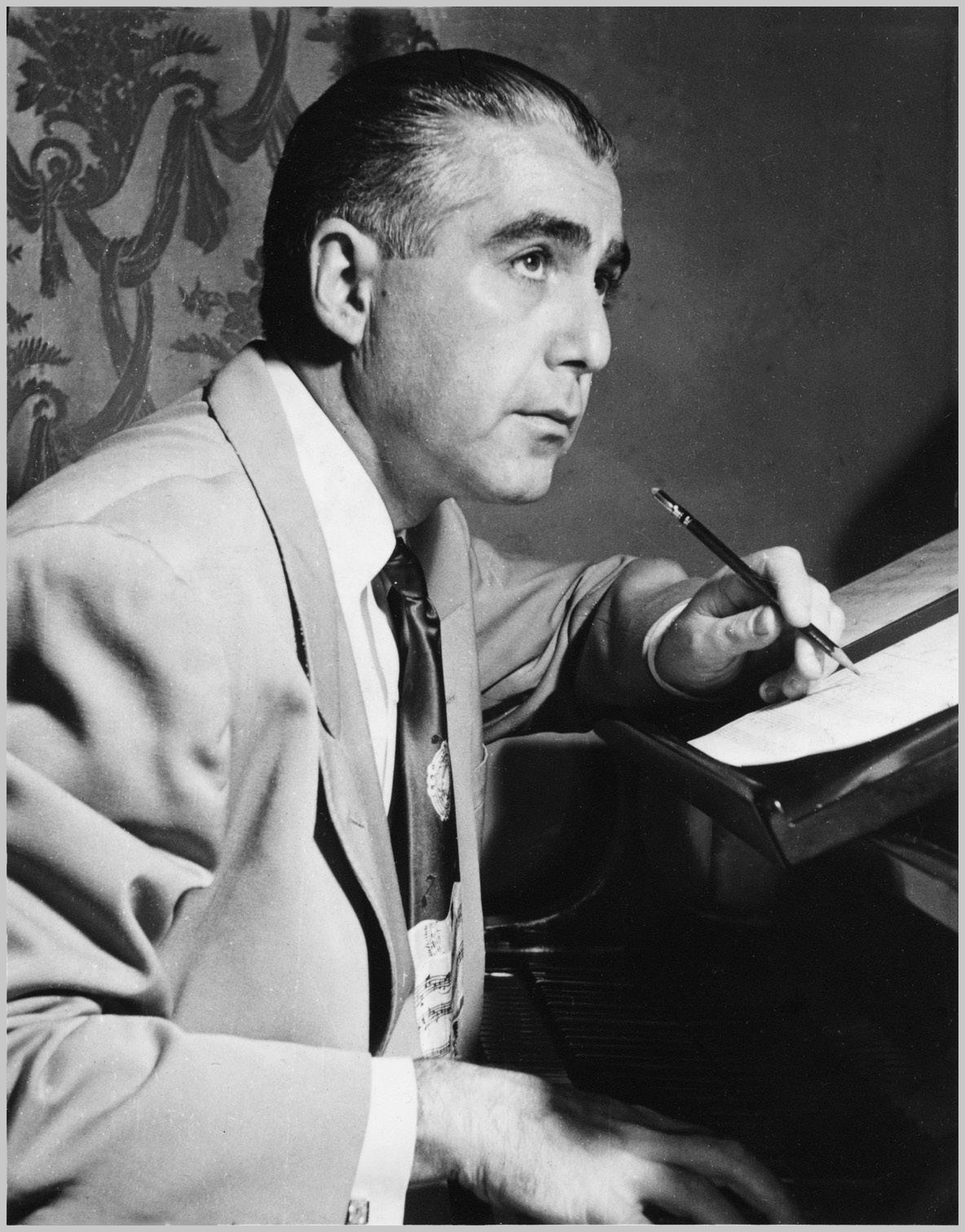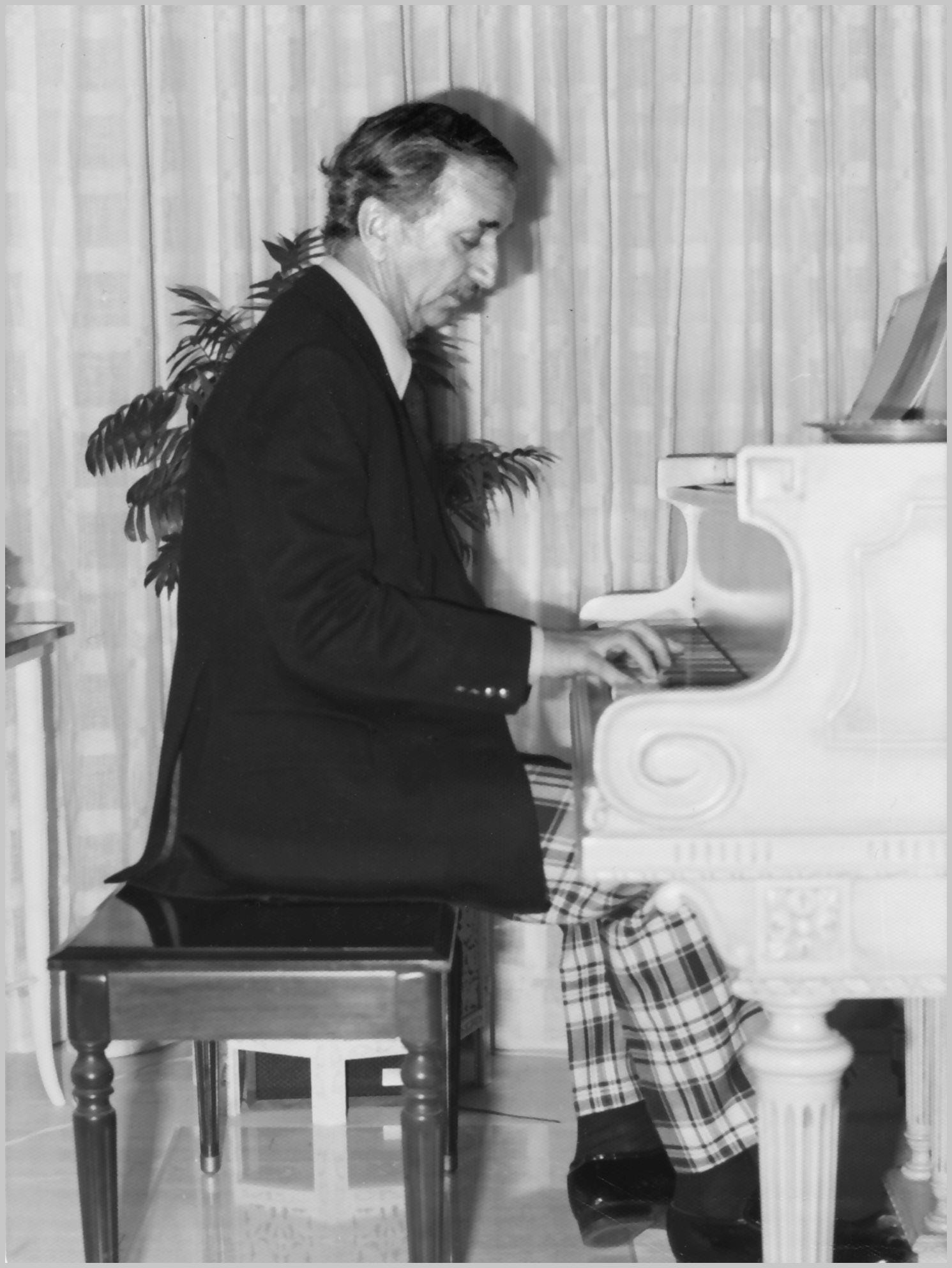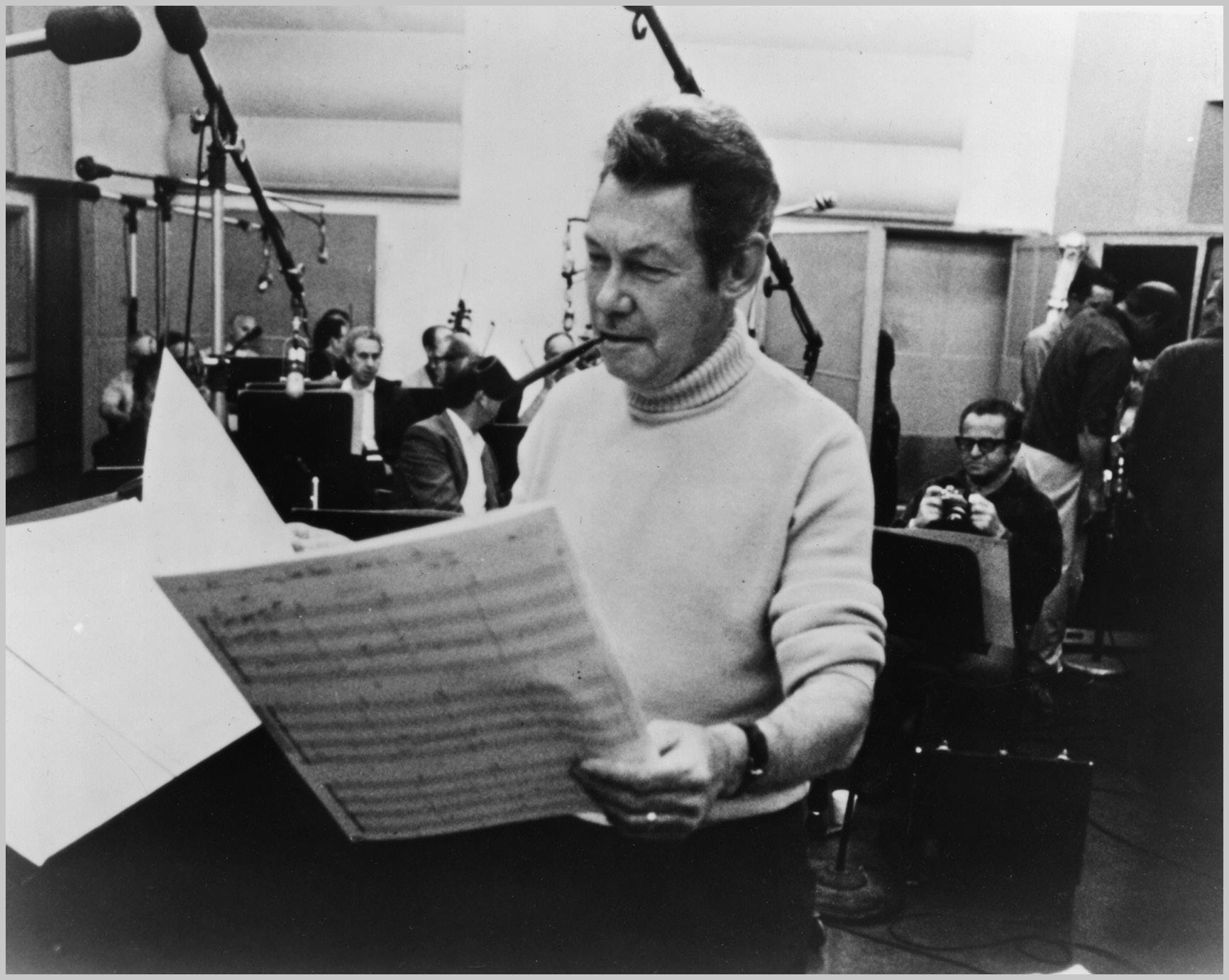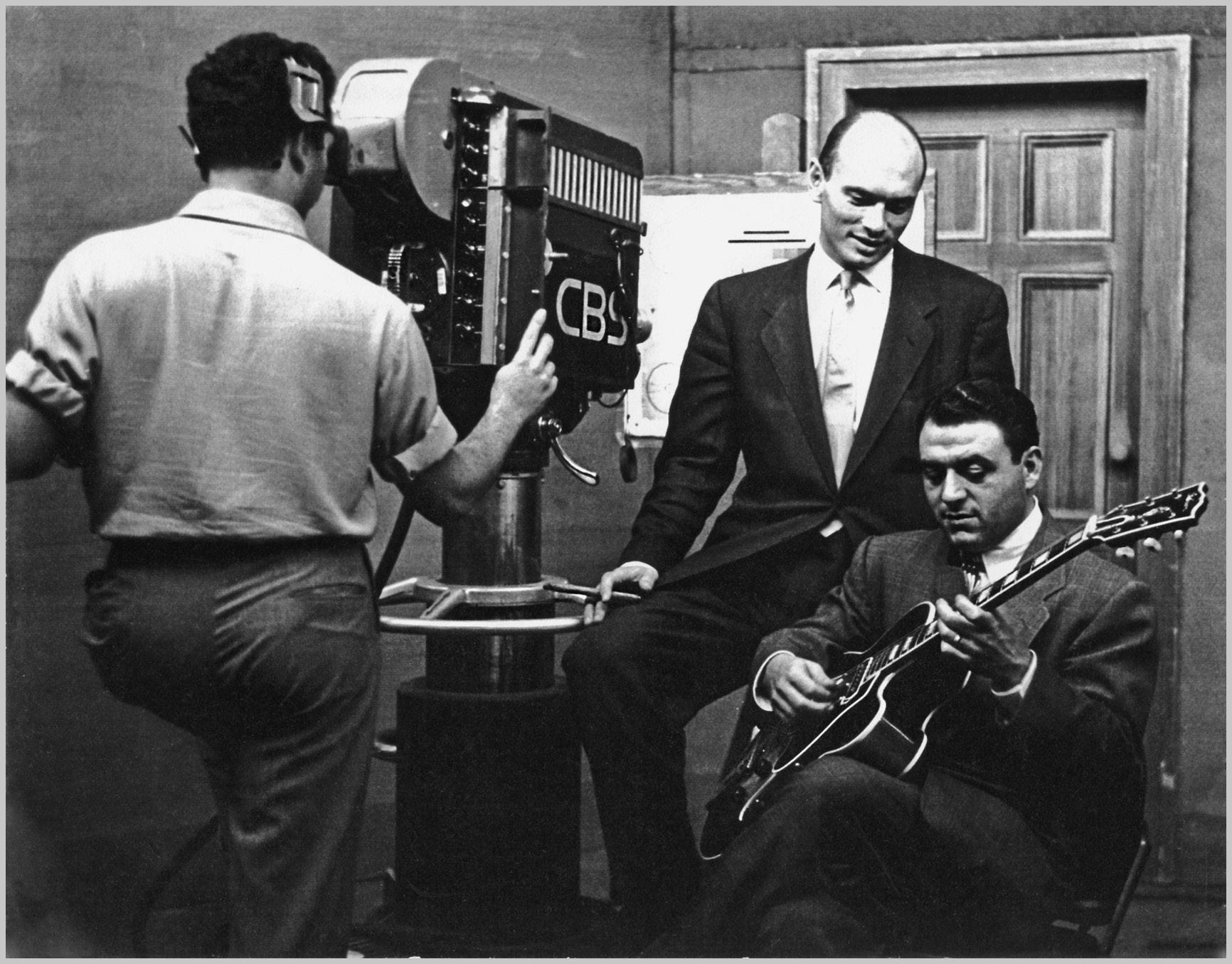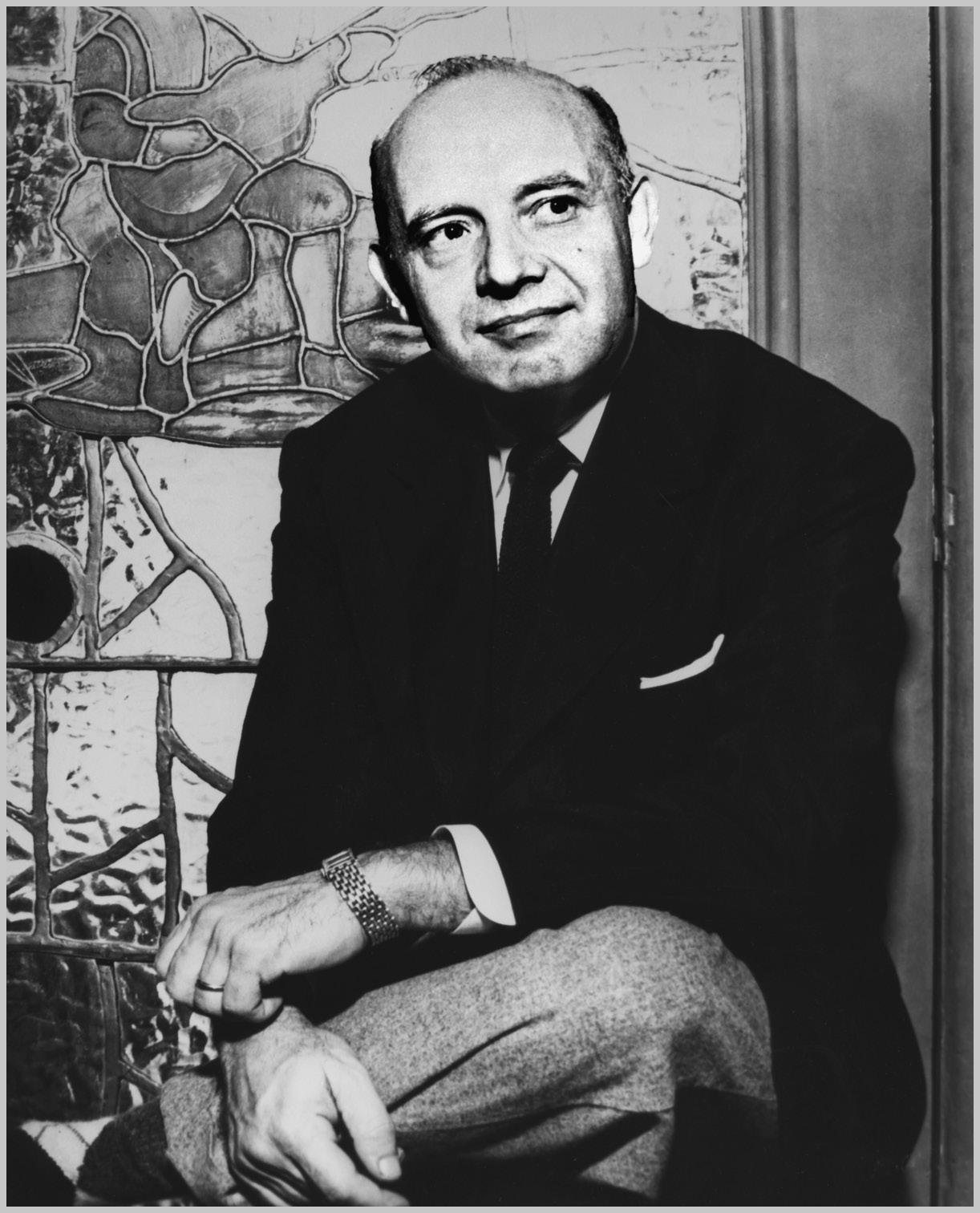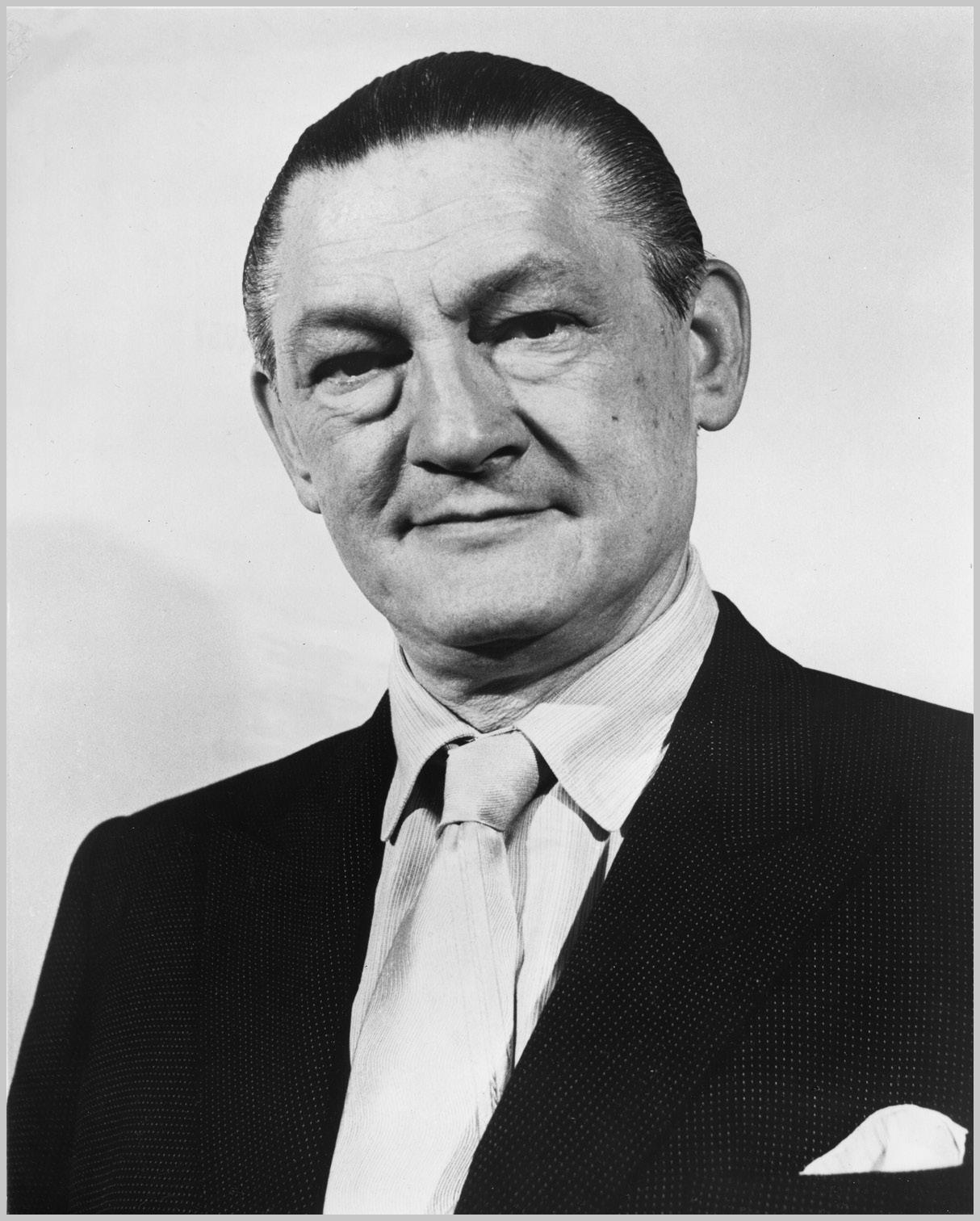Music for PRIME Time
A History of American Television Themes and Scoring
Oxford University Press is a department of the University of Oxford. It furthers the University’s objective of excellence in research, scholarship, and education by publishing worldwide. Oxford is a registered trade mark of Oxford University Press in the UK and certain other countries.
Published in the United States of America by Oxford University Press 198 Madison Avenue, New York, NY 10016, United States of America.
© 2023 Jon Burlingame 2022
All rights reserved. No part of this publication may be reproduced, stored in a retrieval system, or transmitted, in any form or by any means, without the prior permission in writing of Oxford University Press, or as expressly permitted by law, by license, or under terms agreed with the appropriate reproduction rights organization. Inquiries concerning reproduction outside the scope of the above should be sent to the Rights Department, Oxford University Press, at the address above.
You must not circulate this work in any other form and you must impose this same condition on any acquirer.
Library of Congress Control Number: 2022941549
ISBN 978–0–19–061830–8
DOI: 10.1093/oso/9780190618308.001.0001
9 8 7 6 5 4 3 2 1
Printed by Sheridan Books, Inc., United States of America
Acknowledgments vii
Introduction 1
1 “Hi-yo, Silver!”: The Birth of TV Music 5
2 “Book ’em, Danno”: Cop and Detective Shows 33
3 “Head ’em up! Move ’em out!”: The Westerns 84
4 “You are traveling through another dimension”: Fantasy and Science Fiction 115
5 “Man, woman, birth, death, infinity”: Drama 159
6 “Just sit right back and you’ll hear a tale”: Comedy 197
7 “Your mission, should you decide to accept it”: Action-Adventure 253
8 “You are there”: Documentaries, News, and Information Programming 282
9 “Flintstones! Meet the Flintstones!”: Cartoons in Prime Time 311
10 “My name is Kunta Kinte”: Made-for-TV Movies and Miniseries 325
11 “Mrs. Peel, we’re needed”: British Shows Aired in America 374
12 “This is the way”: Music for Cable and Streaming Services 399
Afterword 426
Photo Credits 429
Bibliography and Sources 431
Index 447
Acknowledgments
First, my thanks to all of the composers, producers, music editors, and music supervisors who agreed to be interviewed; their memories, and their work, are the backbone of this history (all are cited in the “Sources” section). Special thanks to Richard Carlin, the Schirmer Books editor who agreed to publish this the first time around; and to Norm Hirschy, the Oxford editor who thought there might be merit in a revised, expanded edition with a better title.
Then, my sincere gratitude to the dozens of friends and colleagues who helped, both with the 1996 edition and this new one: Bruce Babcock, Lori Barth, Joel Beckerman, Stacey Behlmer, Richard Bellis, David Bianculli, Robin Bilinkoff, Larry Blank, Jeff Bond, Bill Boston, Stephen Bowie, Lance Bowling, Gareth Bramley, Neil S. Bulk, Ron Burbella, Dan Carlin, Tom Cavanaugh, Andie Childs, Ned Comstock, Stephen Cox, Michael Crepezzi, Mark Dawidziak, Sandy DeCrescent, Frank DeWald, Ian Dickerson, Jim DiGiovanni, Jim DiPasquale, Dennis Dreith, Timothy Edwards, Jeff Eldridge, Laura Engel, John Fitzpatrick, M.V. Gerhard, Maria Giacchino, Lee Goldberg, Dan Goldwasser, Mike Gorfaine, Heather Guibert, Gina Handy, Steve Hanson, Jennifer Harmon, Michael Hill, Mark Eden Horowitz, Ashley Irwin, Preston Neal Jones, Camara Kambon, Lukas Kendall, and Bruce Kimmel.
Also, Julie Kirgo, Maria Kleinman, Mike Knobloch, Nancy Knutsen, Richard Kraft, Randall Larson, Shawn LeMone, Geoff Leonard, Stephane Lerouge, Michael Levine, Mike Matessino, Michael McGehee, Mark McKenzie, Robert Messinger, Steve Mitchell, Yavar Moradi, Dave Norris, Abby North, Bobbi Page, Forrest Patten, Phyllis Paul, Tommy Pearson, Andrew Pixley, Renata Pompelli, Jeannie Pool, Jamie Richardson, Judie Rosenman, Doreen Ringer Ross, Patrick Russ, David Schecter, Theresa Eastman Schifrin, David Schwartz, Doug Schwartz, Sam Schwartz, Daniel Schweiger, Warren Sherk, Brent Shields, Joe Sikoryak, Scott Skelton, Steven Smith, Mark Smythe, Chris Soldo, Paul Sommerfeld, Craig Spaulding, Sally Stevens, Sheila Sumitra, John Takis, Susanna Moross Tarjan, Ford A. Thaxton, Mike Todd, Robert Townson, Matt Verboys, Pete Walker, Nikki Walsh, John W. Waxman, Laurel Whitcomb, Steve Winogradsky, Jaz Wiseman, Reba Wissner, and Les Zador.
viii
And the late Tony Thomas, David Kraft, David Mitchell, Henry Adams, Arthur Greenwald, Dave Fuller, Lois Carruth, Ronni Chasen, Beth Krakower, and Nick Redman, all of whom encouraged me in countless ways over the decades, as well as friends at ASCAP, BMI, SESAC, Local 47 of the American Federation of Musicians, the Recording Musicians Association, Society of Composers & Lyricists, and the helpful personnel at my favorite libraries—those at the University of Southern California, the University of California at Los Angeles, and the Margaret Herrick Library of the Academy of Motion Picture Arts & Sciences— must also be on this list.
Finally, thanks to the many publicists who helped facilitate interviews (too many now, over 35 years, to name, but thank you!), and my editors at Variety, The Hollywood Reporter, and the Los Angeles Times who have allowed me to pursue this line of work for so long: Steve Gaydos, Steve Chagollan, Ray Bennett, Rich Nordwind, and Anne Hurley. I am especially grateful to two trusted friends who regularly awoke to panicked emails from me about obscure themes and scores I simply had to find: Craig Henderson and Nik Ranieri. And most of all, to the extraordinary woman who has shared my life (and tolerated my obsessions) for nearly 25 years, without whom this work, and so much more in my life, would not have been possible: Marilee Bradford.
Introduction
Television music, someone once said, is “the soundtrack of our lives.” For the postwar “baby boom” generation and beyond, that is unquestionably true. We grew up in front of the set. The music that accompanied those images became—for better or worse—indelibly stamped on our minds. Kids of the 1950s don’t think of the William Tell overture as the start of a Rossini opera: to them it’s the Lone Ranger theme. Children of the 1960s can sing “a horse is a horse, of course, of course”; “just sit right back and you’ll hear a tale, a tale of a fateful trip”; and “they’re creepy and they’re kooky, mysterious and spooky”—all instantly recognizable as the title songs for Mister Ed, Gilligan’s Island, and The Addams Family, respectively.
Instrumental music, too, became as familiar as the pop tunes we were hearing on the radio. Any boomer can hum the opening notes of the Dragnet, Twilight Zone, and Hawaii Five-0 themes. Kids who grew up still later are equally conversant with the music of The Brady Bunch, The Mary Tyler Moore Show, Dynasty, and Hill Street Blues. Later generations know the themes for Friends, Sex and the City, Six Feet Under, and Game of Thrones as well as they know any song by U2, Madonna, or Taylor Swift.
But the story of this unique subgenre of American popular music extends well beyond the simple creation of catchy tunes or clever lyrics in one-minute bites. Virtually all of the most successful film composers of modern times—John Williams, Jerry Goldsmith, Henry Mancini, Lalo Schifrin—enjoyed their first taste of success in television. They learned and honed their craft toiling on weekly series.
For veteran film composers, the 1960s and 1970s marked a downturn in their motion-picture fortunes, especially as the movies increasingly shunned the traditional film score in favor of pop songs. So men like Bernard Herrmann, Alex North, Bronislau Kaper, George Duning, Franz Waxman, even the great Max Steiner, turned to the small screen for work, while others including Earle Hagen, Arthur Morton and Alexander Courage (who had worked on major films in better times) not only found steady employment in TV, they enjoyed bigger success in the new medium than they had ever found in the old one.
And their work wasn’t all for silly sitcoms, clichéd westerns, or turgid drama shows. Some of the century’s most celebrated composers created music for television, often in the documentary field: Richard Rodgers on Victory at Sea, Darius Milhaud on The Twentieth Century, Morton Gould with World War I. Even the great Aaron Copland composed the theme for CBS Playhouse.
As the made-for-TV movie matured into a forum for important social discourse and the miniseries tackled subjects on a grand scale—from
Stanley Wilson conducting at Revue.
Roots to War and Remembrance, Shogun to Lonesome Dove the medium lost much of its stigma as “a vast wasteland” (FCC Commissioner Newton Minow’s infamous 1961 pronouncement) as front-rank film composers like Elmer Bernstein, David Raksin, John Barry, Michel Legrand, and Ennio Morricone wrote television scores that lingered in the memory just as their greatest music for the big screen always had.
Music for television has often been dismissed as lacking the quality or lasting impact of feature film scores. This is the argument of arrogant, elitist, and largely ignorant observers who consider the medium as a whole beneath serious consideration. Television scoring—just like its better-paid cousin, music for movies—is written to exacting specifications, under pressure of impending airdates and impatient producers, and is designed to meet specific dramatic needs. The difference is that the small screen demands more music, more quickly, and these days, more cheaply.
To relegate all TV music to the junkpile is myopic. The fact is that not all film scores are great, just as most television music is forgettable. Both are, by and large, commercial endeavors, combining art and business for the sake of profit (and sometimes entertainment, education, or edification). Even Mozart didn’t write Cosi Fan Tutte as high art; he was trying to pay his bills.
What follows is a survey of music for American television, from its earliest days, when very little of the music was original, to the present. The focus is on music specifically created for the medium, although there is (in Chapter 1) a discussion of the widespread use of library music for “tracking” into various shows. Three areas of television music are outside the scope of this study: daytime (mostly soap operas and game shows); children’s TV outside of prime time (daytime, Saturday mornings, and on cable); and the realm of musicals and operas (a rich arena of musicmaking that deserves a detailed study of its own).
I first tackled this subject a quarter-century ago, in a book that was saddled with an unfortunate title (TV’s Biggest Hits), received little promotion, and quickly went out of print. I have revisited that material, substantially revising and expanding it to cover topics omitted the first time around, and have chronicled much that’s happened in television music since.
This book is the product of 35 years of research, including more than 400 interviews with composers, producers, orchestrators, and music editors; a thorough review of what little previous literature existed in the field; and viewings of countless series episodes, documentaries, telefilms, and miniseries with a critical eye toward the scores as they were heard by viewers over the past 70 years.
This is not a musicological treatise. Rather, it’s a history of a vastly underappreciated realm of American music, wherein seasoned
4 professionals created sounds and scores that resonated in a thousand ways with millions of listeners. I hope the reader will find this both nostalgic and enlightening, reminding them of the themes and music they recall so fondly from the past, and perhaps gently prodding them to listen just a little more closely the next time they tune in or log on.
“Hi- yo, Silver!”
The Birth of TV Music
Many of television’s earliest series simply moved over from radio, in some cases taking the same scripts and committing them to film (or restaging them live). Making the transition were many of the same actors and producers—and, often, the music.
Television adopted the commonplace radio strategy of using “canned” music in the vast majority of shows. Only in the rarest instances were early television programs actually graced with original music. The term “canned music” applied to prerecorded selections, usually chosen for specific purposes (whether “source” music, meaning originating on a radio, record player, or other obvious source; or as dramatic cues, designed to evoke suspense, create romantic moods, bridge disparate scenes, or otherwise enhance the on-screen action).
The classic example of a popular radio hero adapted for the new medium—along with his highly identifiable theme music—was The Lone Ranger (1949–1957, ABC). A radio favorite since 1933, this saga of the masked avenger of the Western Plains was heralded by the finale of the overture to Gioacchino Rossini’s 1829 opera William Tell.
The opening trumpet notes, and the narrator intoning, “A fiery horse with the speed of light, a cloud of dust and a hearty ‘hi-yo Silver!’ ” made the transition to the small screen intact. As in radio, the drama
6 was heightened by additional excerpts of classical music drawn from the works of composers such as Tchaikovsky and Liszt, plus music originally written for the Lone Ranger movie serials and other Republic westerns.
In fact, the performances themselves were identical. “We had all of the music which had been recorded by George W. Trendle, who owned The Lone Ranger,” music editor Byron Chudnow recalled. “All those pieces, that familiar classical stuff that was on the radio. They sent the records out to us, and I had the records transferred to film. We’d never even heard of tape.”
Chudnow, who had studied violin, was the only musician at Apex Films, where The Lone Ranger was being edited. So the job of putting music to the adventures of Clayton Moore and Jay Silverheels fell to him. “Most of [the cues] were bridges from one scene to another; sometimes you had a horse chase,” he said. In all, he estimated, the entire music library consisted of only a few dozen cues (all “badly recorded, with a small orchestra,” Chudnow remembered). “People didn’t expect anything else.”
The entire Lone Ranger music library amounted to 25 single-sided, 12inch, 33 1/3 rpm transcription records (plus the William Tell overture on a 78 rpm disc); 67 of its 89 cuts were classical music excerpts, the remainder rescored pieces of compositions by Republic composers William Lava, Alberto Colombo, Karl Hajos, and Cy Feuer. Most of the music was recorded in Mexico around 1940.
The use of previously written and recorded music was known, as it was in radio, as a “needle-drop.” In radio, an engineer literally cued up a record and lowered the needle onto the spinning platter at the appropriate moment during the action. In television, it was technically more complex: music was committed to film as a carefully synchronized element of the sight-and-sound presentation. But the object of the score— increasing the tension, propelling the chases, emphasizing emotional moments—and the nature of the music itself remained the same.
The vast majority of filmed television shows utilized canned music for a simple reason: it was cheaper than recording new scores. James C. Petrillo, the iron-fisted president of the American Federation of Musicians (AFM), had long fought against the “mechanized” use of music in film, phonograph records, and radio (because it supposedly discouraged the employment of musicians for live performances). In 1950, Petrillo demanded that producers pay a 5 percent tax on the cost of every show that used union musicians to record a score, with the surcharge payable to the union’s already rich Performance Trust Fund. The networks agreed to Petrillo’s demand in 1951, but members of AFM locals 47 (Los Angeles) and 802 (New York) fought the controversial union boss on the issue, correctly believing that the demand had cost them considerable work—because producers balked at such payments and skipped hiring “live” musicians altogether.
CBS West Coast music director Lud Gluskin, during testimony at a House subcommittee hearing in May 1956, blamed AFM policies for the fact that an average show using 10 musicians cost $2,000 in salaries and another $1,500 in Trust Fund payments. Because of this, he routinely went abroad to record music for CBS television and radio broadcasts (and was expelled from the union for doing so). An attorney for an association of TV producers testified at the same hearing that “90 percent of the television film now being produced is made with canned music.”
Producers avoided much of the expense associated with recording music in Hollywood by privately licensing canned music that had been recorded outside the United States, often in Europe or Mexico. A number of entrepreneurs—some of them composers, some just shrewd music “packagers”—shopped these “libraries” of dramatic cues around town, particularly to independent producers who were anxious to provide stations with much-needed product for the burgeoning medium.
Adventures of Superman (1952–1958), one of television’s first, and most successful, syndicated series, was typical of the programs that utilized music libraries. For the first season of this enduring adaptation of the DC Comics hero (“fighting a never-ending battle for truth, justice, and the American way!”), producer Robert Maxwell contracted with music packager David Chudnow (the father of Lone Ranger music editor Byron).
The elder Chudnow (1902–2002) pioneered the music-library business in television. A former studio pianist, he eventually became an independent music supervisor for dozens of mostly low-budget films throughout the 1940s, hiring composers, overseeing recording sessions, and handling the music budget. In 1950, he created the Mutel (Music for Television) music service. Robert Montgomery Presents (1950–1957, NBC) became his first client; Superman soon followed.
Chudnow founded the Mutel library with music from low-budget films like Open Secret (1948, music by Herschel Burke Gilbert) and The Guilty (1947, music by Rudy Schrager), the scores of which he took over to France for re-recording with slightly larger orchestras (approximately 40 musicians, compared with the 25 or so on the Hollywood recordings).
He also approached Gilbert and two colleagues about expanding the library with music that could fit a variety of dramatic situations. All three would go on to small-screen fame with the themes for fondly remembered shows: Gilbert with The Rifleman, Joseph Mullendore with Honey West, and Herb Taylor with Death Valley Days.
Gilbert recalled: “Chudnow came to us and said, ‘Look, I need music for television. You guys write me two hours of music.’ I don’t remember if he gave us a thousand dollars apiece. We wrote two or three chases; two or three misteriosos, you know, the sneak-alongs; some comedy music and love themes. And we’d write them so they could be longer or shorter, and with long tails so that they could be edited. By then, we really knew what we were doing from a craftsman’s point of view.”
As written, most of the “cues” (individual pieces of music) were rather long—an average of 90 seconds to two minutes. Chudnow recorded the music overseas, then created a series of discs that could be played for producers and music editors for auditioning purposes.
Because this was an operation effectively designed to circumvent union regulations, the composers adopted pseudonyms for purposes of royalty payments by the music-licensing organizations (in this case, ASCAP, the American Society of Composers, Authors and Publishers; and BMI, Broadcast Music Incorporated, which also represented many film and TV writers). “But we still got the credit,” Gilbert pointed out, “because we sent ASCAP a list of our pseudonyms. That’s why we wrote the music, to get the ASCAP credit, and it’s made some of us fairly rich today. So it was no joke.”
The first season of Superman, filmed in black and white and often dwelling on grim crime stories, was filled with the brooding, dramatic, and thrilling sounds of these up-and-coming composers. The individual cues bore titles like “Brawl,” “Creeping Misterioso,” and “Tragic Tension,” and the result was a virtual symphonic accompaniment that musically matched the earthly exploits of the super-powered last survivor of the planet Krypton.
For later seasons of Superman, the Mutel music was supplanted by music from British mood-music libraries (notably the Francis, Day & Hunter, and Paxton collections) and, still later, American ones (Emil Ascher Video Moods, Langlois Filmusic).
Mutel music was also “tracked” into dozens of 1950s series, in addition to Superman: Annie Oakley (1952–1956, syndicated); Broken Arrow (1956–1958, ABC); Captain Midnight (1954–1956, CBS); China Smith (1953, syndicated); Duffy’s Tavern (1954, syndicated); Man with a Camera (1958–1960, ABC); Racket Squad (1951–1953, CBS); Ramar of the Jungle (1952–1953, syndicated); Sky King (1951–1954, NBC, ABC); Topper (1953–1955, CBS); and many others.
THE SUPERMAN THEME
Another aspect of the music of Adventures of Superman that typified 1950s TV series was the commission of an original series theme: music written and recorded specifically for the opening main-title sequence, the end-credit roll and, sometimes, interludes during the body of the program itself.
The identity of that composer was not widely known for many years, as (again, typical of TV in that era) there were no screen credits for music, and no commercial recording of the theme until the mid-1970s.
The composer was Leon Klatzkin (1914–1992), who served as music supervisor for the first season of the DC Comics adaptation starring George Reeves. Klatzkin’s name appears on all the series’
cue sheets (the formal documentation of music for every TV show, listing composers, music publishers, and duration of each cue in the score) as composer of both the “Superman March” and the flying music that accompanied the Man of Steel whenever he leapt into the air.
Just as the main-title sequence and opening narration for TV’s Superman mirrored the opening of the lavish Max Fleischer Superman cartoons of the early 1940s, its heroic musical theme seemed inspired by Sammy Timberg’s fanfare for the animation, with its ascending, three-note “Su-per-man” trumpet call. (Even John Williams’s theme for the 1978 Christopher Reeve Superman movie used a similar three-note scheme.)
Producer Robert Maxwell, who had insisted that the Timberg fanfare be reprised in the Superman
Another prominent figure was Alexander Laszlo (1895–1970), a Hungarianborn composer who emigrated to the United States in 1938 and became active in film work during the 1940s. Laszlo supplied music to the Roland Reed filmed-television operation, which produced such shows as the sitcom My Little Margie (1952–1955, CBS, NBC), the drama Waterfront (1954–1956, syndicated), and the early science-fiction serial Rocky Jones, Space Ranger (1954, syndicated). “He had recorded [the music] in Europe, or Mexico, or in his garage,” music editor Robert Raff quipped. “I think he wrote most, if not all, of it, because his style was quite distinctive.
“I really started working with him on what the cues should be, and what music should sound like for television,” Raff said. “I found most of the music to be like underscore for motion pictures. He was a fine musician, but he had not been trained in the intricacies of television. We had long discussions, and he started coming up with music cues that were more in keeping for TV. If I was stuck [without music for a scene], I would call him and he would manufacture, somehow or other, the particular cue.”
Composer Albert Glasser (1916–1998), who later became famous for scoring such drive-in movie classics as The Amazing Colossal Man (1957) and Teenage Caveman (1958), was responsible for the music of The Cisco Kid (1950–1955, syndicated) and Big Town (1950–1956, CBS, NBC). Both series employed libraries of music, but unlike many series, all of the music was clearly Glasser’s and a substantial portion was original to television.
Producer Phil Krasne, who made low-budget Cisco Kid movies in the late 1940s, had struck a deal with independent television producer Fred Ziv to create a Cisco Kid series for syndication. The TV programs retained two key elements from the films: actors Duncan Renaldo and Leo Carillo as Cisco and his sidekick Pancho, and the flavorful, Mexican-style music written by Glasser for the original films.
radio broadcasts of the late 1940s, commissioned a theme for the TV series that followed the pattern. Klatzkin, who chose all of the Mutel library cues for the show’s underscore, appears to have been responsible for making that happen.
Klatzkin played trumpet for the San Francisco Symphony from 1936 to 1941 and studied composition in the late 1940s with such Los Angeles notables as Mario Castelnuovo-Tedesco and Arthur Lange. He composed the music for the low-budget film Inner Sanctum in 1948 and went on to score several more movies in the 1950s, mostly during his stint as musical director for producer Hal Roach Jr. (including Tales of Robin Hood, 1951, and Captain Scarface, 1953).
Klatzkin also scored the half-hour comedies My Hero (1952–1953, NBC); The Gale Storm Show (1956–1960, CBS, ABC); and The Dennis O’Keefe
Show (1959–1960, CBS). His strongest period as a composer was during the 1960s, when he wrote dozens of dramatic scores for the CBS-produced westerns Gunsmoke, Rawhide, and Cimarron Strip Oddly, when Klatzkin applied for membership in the Screen Composers Association and Composers Guild of America in 1953–1954, he failed to list Superman among his credits. Yet he did so in 1980 for the ASCAP Biographical Dictionary, and his family included it in the information provided for his 1992 obituary.
During the 1950s, as an active member of the AFM and a composer who desired to continue to work in Los Angeles, he may have feared expulsion if it was discovered he was responsible for skirting union obligations by authorizing non-union recordings (as happened to other AFM members, including CBS executive Lud Gluskin).
Glasser composed and orchestrated the scores, sent them to a colleague in Tokyo for re-recording, and delivered the finished tracks to a music editor at Ziv for tracking purposes. The Cisco Kid, filmed in color, became a favorite with the younger set, and Glasser’s rousing score accompanied all 155 episodes. (Glasser, despite being paid only $3,000, including all orchestra costs, achieved an authentic sound on the old film scores by researching Mexican music of the period.)
The Superman music was apparently recorded in early 1952, not long after Klatzkin’s Robin Hood score; the final bars of both bear a strong resemblance. Mexico City was a possible recording location, as considerable TV music was surreptitiously recorded there in the 1950s (including the children’s show Fury, conducted by Klatzkin’s Inner Sanctum collaborator Emil Newman), again to circumvent American union demands. By the 1980s, when Klatzkin was retired, those issues were moot, and he may have been more comfortable publicly taking credit.
The “Superman March” and flying motif were the only original pieces composed specifically for the series. The copyrighted music on file at the Library of Congress is credited to Klatzkin.
Albert Glasser in the 1950s.
While Cisco Kid simply reused the music from the Cisco movies, Glasser’s Big Town was one of the first scores specifically conceived as a library of original music for a single series. Another adaptation of a popular radio show, Big Town was a half-hour newspaper drama featuring Patrick McVey as a crusading crime reporter and Mary K. Wells as a society columnist. Explained Glasser: “I would compose a ton of music for all the scenes in the series, including the cues for into-commercial, out-ofcommercial, fights, love scenes, driving around town, chasing the crooks, in the police station, etc., etc. Then I would orchestrate the whole mess and send it in a big bundle to [another overseas friend] in Paris. There he would get the music copied out—it was much cheaper there—get the musicians and record everything on quarter-inch tape.”
Glasser conceptualized his music based on scripts. (Big Town debuted as a live series in New York in 1950 but moved to Hollywood as a filmed series in 1952, and it was for those shows that Glasser’s music was designed.) For his main theme, the composer went the Gershwin route of An American in Paris , attempting, in the composer’s words, to portray “the exciting rhythms of traffic in the big city, with a sweeping melodic line.”
In 1954, the series switched networks and was recast with Mark Stevens (formerly the star of Martin Kane, Private Eye) and Trudy Wroe. And, recalled Glasser, the sponsors demanded new music as well: specifically, something along the lines of the then-popular Dragnet theme. Glasser ultimately came up with a five-note phrase (instead of the familiar Dragnet four-note motif) and wrote “a ton of material, all based on those five notes.” It was all scored for eight French horns and two percussionists (the latter playing not only timpani but also snare drums, vibes, cymbals, and more). “Some of the tricks I had to devise to get various flavors and sounds out of this combination started to become very sneaky,” he said.
Although Glasser had planned a Paris recording session, as he had done for the earlier Big Town score, he ended up literally recording the music in his own living room in Los Angeles. Two horn players and one percussionist, using overdubs, recorded the entire score. Although this was technically a violation of union regulations then in force, Glasser was proud that the $3,500 he had to record the score went to three local musicians and a sound engineer, and not overseas to anonymous French performers.
Raoul Kraushaar (1908–2001), a music director at Republic Pictures during the 1930s and 1940s, frequently enlisted composers to write music for films, often without screen credit. Much of the music written under Kraushaar’s aegis wound up in his own, widely used Omar Music service. The original Lassie (1954–1971, CBS), starring Tommy Rettig, was among the first series to utilize the Kraushaar library for tracking purposes. The earliest MGM TV shows, including The Thin Man (1957–1959, NBC) and
Northwest Passage (1958–1959, NBC), were also scored with music from the Kraushaar library.
Composer Dave Kahn (1910–2008) was one of Kraushaar’s “ghost” writers. He wrote some of the library music heard in the Hopalong Cassidy episodes specifically made for syndication (1952–1954), a business relationship that had resulted from Kahn’s work as an orchestrator on Republic westerns. Kahn’s anonymity stretched into the 1960s, but his music—mostly written for track libraries—was everywhere on television in the late 1950s. The fame he never enjoyed should have begun with his music for Alfred Hitchcock Presents (1955–1962, CBS, NBC), the half-hour suspense anthology hosted in droll fashion, and occasionally directed, by the “Master of Suspense,” for Revue Productions (later Universal Television).
According to longtime series producer Norman Lloyd, it was legendary composer Bernard Herrmann who suggested that Hitchcock use French composer Charles Gounod’s 1872 Funeral March of a Marionette as the series theme. (Herrmann had recently scored the director’s The Trouble with
Dave Kahn.
Harry, launching a decade-long collaboration in films that would later include Vertigo and Psycho.)
Revue music director Stanley Wilson (1917–1970) is believed to have created the original arrangement of Gounod’s amusing, macabre piece, which introduced Hitchcock as he “stepped into” his trademark caricature onscreen to introduce the program (“Good eeeveninnng . . .”). Almost overnight, that music was inextricably linked with Hitchcock and became, like the Rossini overture for The Lone Ranger, better known for its television associations than as a piece of classical music.
Kahn’s frequent employer during the late 1950s was David M. Gordon (1907–1983), a music publisher who had contracted with MCA-owned Revue to provide music for their new television series. Unlike many earlier series, which used music on a more or less generic basis (comedy, dramatic, or suspense cues, often interchangeable between series), Revue commissioned music for specific shows without actually scoring individual episodes.
Kahn created a second arrangement of the Gounod theme (utilized in later seasons) and composed a library of dramatic music specifically for Alfred Hitchcock Presents. Kahn also composed the themes and, as he had done with Hitchcock, wrote a substantial library for the John Payne western The Restless Gun (1957–1959, NBC) and the family comedy Leave It to Beaver (1957–1963, CBS, ABC). In each case, despite Kahn’s role as the undisputed sole composer, the music was often co-credited to Kahn and Melvyn Lenard (the first and middle names of Gordon’s son, enabling the publisher to participate directly in music royalties).
The Beaver theme, a playful tune with a hint of mischief, later gained a lyric and an unrelated title, “The Toy Parade” (a further division of royalties occurred, because lyricist Mort Greene was entitled to a third of the proceeds). Kahn wrote the Beaver theme without ever seeing the pilot. “I was just told it was a kids’ show and, basically, what it was all about,” he said. Like the music for Hitchcock and the other shows, it was written in Los Angeles but taken to Munich, Germany, for recording in order to skirt AFM regulations and penalties.
Kahn contributed several other themes to 1950s television, including the suspense anthology Suspicion (1957–1958, NBC), the detective show 21 Beacon Street (1959–1960, NBC, ABC), and the William Bendix western Overland Trail (1960, NBC). He went on to become music editor for many of the Filmways comedies of the 1960s, starting with Mister Ed for which he composed a library of music, also recorded overseas— and several other series, including The Beverly Hillbillies and Green Acres.
The issue of ghosting and awarding proper credit to the composer was a serious problem in those early days. Screen credits were rare and cue sheets, even when filed, did not always reflect the truth. Ziv, a major supplier of syndicated programming in the 1950s, almost never gave screen credit, and its own music editors professed ignorance as to the actual origin of the music they tracked into their shows, much less the identities of the composers.
David Rose, the composer of “Holiday for Strings” and “The Stripper,” is widely believed to have written the themes for Ziv’s Highway Patrol (1955–1959) and Sea Hunt (1958–1961), yet both are officially credited to one Ray Llewellyn—a name that no one connected with Ziv during that period could recall. If Llewellyn existed, he never joined BMI or ASCAP, and therefore never received any royalties for the thousands of plays of his music over the years.
The grim martial rhythms of the Broderick Crawford police drama (“Ten-four!”) and the melodramatic opening for the Lloyd Bridges skindiving adventure became as well known as any themes of the era. No one received screen credit for the music in either case; the underscores were drawn from established music libraries, according to Ziv supervising music editor Milton Lustig. Rose (who had written music for Ziv radio shows in the early 1950s) later composed, and received credit for, the themes for Ziv’s Men into Space (1959–1960, CBS) with William Lundigan, and The Case of the Dangerous Robin (1960, syndicated) with Rick Jason.
Many of the individual music libraries eventually were supplanted by a highly organized new library created in the mid-1950s by Capitol Records. Composer William G. Loose (1911–1991), with the title of “western studio representative” at Capitol, oversaw this operation and, as a result, became the supplier of several memorable themes, including The Donna Reed Show (1958–1966, ABC), Dennis the Menace (1959–63, CBS), and The Texan (1958–1960, CBS), all officially credited to Loose and Capitol executive John Seely.
William G. Loose.
Jack Cookerly (1926–2017), who worked closely with Loose and wrote hours of music that was licensed through the Capitol library, explained the beginnings of the operation: “Bill Loose had written five hours of music for Capitol, without any reference to any films. They were [scoring] industrial films and in-house films, so Bill set up some categories: dramatic, melodic, light activity, mechanical, this and that. So you could come in for any film and find some music for it. It wasn’t tailored for television at all.”
When Screen Gems began production on The Donna Reed Show, executives “came over looking for a theme,” Cookerly recalled. “Bill had written a real nice, pleasant little melody which we eventually called ‘Music to Wash Windows By,’ because it’s so insipid. They picked that piece of music for the Donna Reed theme. [The studio] made a request that that theme be restricted—because you didn’t want to find it on an Ajax commercial, which happened a couple of times—so that theme was locked into the show.” Loose wrote the Dennis the Menace theme specifically for that series. Often, producers would request a “theme set,” essentially a small library of cues based on an original theme that Loose, Cookerly, or both might compose; this was the case with Donna Reed, Dennis, and others.
Among the major users of the Capitol library was Desilu. Music editor Robert Raff, who joined Desilu about 1958, recalled that “99 percent of the track was out of Capitol” in those days. Shows such as The Real McCoys, though not owned by Desilu, utilized the studio’s production facilities. “They had a theme written for them, but beyond maybe half a dozen cues based on the main title, the rest was track,” Raff said.
The Real McCoys (1957–1963, ABC, CBS) starred Walter Brennan as patriarch of a West Virginia family that moved to central California. Veteran tunesmith Harry Ruby (1895–1974), whose career dated back to Broadway in the 1920s and whose film work included songs for the Marx Brothers movies Duck Soup and Horse Feathers, wrote a country-flavored title song, an early instance of a TV theme hinting at the characters’ backstory and an approach that would become commonplace a few years later.
The anthology Desilu Playhouse (1958–1960, CBS), which boasted an original theme by longtime MGM musical director Johnny Green (Raintree County), utilized no original dramatic underscore. Some of those first-season shows that Raff tracked with previously recorded Capitol music were “The Time Element,” a Rod Serling fantasy that served as the basis for his Twilight Zone; and the two-part “The Untouchables,” the ambitious Eliot Ness story that became the pilot for the famed crime series.
Raff, in consultation with Loose, chose the cues to score the various films. The Capitol music proved so useful that “we actually physically moved the entire library into the studio,” Raff recalled. “They made duplicates of everything. I had two or three file cabinets full of records,
just from the material that I liked.” Capitol’s so-called Hi-Q library encompassed several hundred hours of commercially available music by the mid-1960s.
The vast majority of prime-time programs during the 1950s were tracked with library music. But there were a few notable exceptions, all attributable to producers who understood the value of original scoring to create moods and enhance atmosphere—and who agreed to pay the high premium demanded by the AFM in order to achieve this.
One of the earliest, and at the same time the most innovative, was Danger (1950–1955, CBS), a live suspense anthology based in New York City. Guitarist Tony Mottola (1918–2004), a highly respected musician on staff at CBS, had been doing a nightly 15-minute music show, Face the Music (1948–1949), with vocalists such as Johnny Desmond, when he heard from a young director named Yul Brynner (later the noted stage actor). According to Mottola, Brynner had been assigned Danger, a new half-hour show designed to follow Suspense (1949–1954, CBS) on Tuesday nights. In another holdover from radio, a number of studio shows, including Suspense, featured an organist playing live background music.
“Yul wanted to do something different,” Mottola recalled. At the time, the postwar drama The Third Man (1949) was doing well at the box office and its score, played entirely on a single instrument—the zither—had become something of a sensation. “So Yul asked me if I would be interested in coming up with a theme.”
Tony Mottola (with guitar, seated) with director Yul Brynner, rehearsing for an episode of Danger
Brynner described the opening visuals he had in mind: The camera pans along a fence at night. Suddenly, a dagger is thrown and sticks in the fence. A flashlight illuminates the still-quivering weapon and the graffitilike scrawl on the boards: “Danger” and the names of the evening’s stars. Mottola’s concept—for electric guitar alone—was both simple and undeniably effective: the insistent rhythm of a single repeated low note, interrupted at the point of the dagger flying into the fence by a single, ominous chord. Musicians began referring to it as “the Danger chord,” or “the Tony Mottola chord,” although in fact the entire theme was quite haunting and Mottola’s work involved more than just a signature tune for the opening and closing of the show. Brynner insisted, as did his successor, Sidney Lumet, on an original score each week.
Mottola explained: “I would attend readings and rehearsals during the week. Then I would see a run-through a couple of days before [air], and I would have a meeting with Yul, and later Sidney. We would discuss the various moods that we felt were needed, where music was needed, and so forth. And I would proceed to write to the script. Then, the day of the show, we would have a run-through and I would play, although it was difficult for me [in terms of] timing, because it was stop-and-go, stop-andstart. And then airtime, you got a cue and away you went.”
Mottola was located in a booth next to the control room. He could see the stage action via a monitor, and the director in the control room before him; his headphones gave him the dialogue and sound effects in one ear and instructions from the director in the other. Mottola’s biggest problem was having only two hands. “I had to practically memorize those areas of the script that I was underscoring,” he said, “as I couldn’t turn pages and play the guitar at the same time.”
The subject matter was often quite dark, and murder was never far away. But the source material was frequently impeccable: adaptations of stories by Ambrose Bierce, Agatha Christie, Edgar Wallace, Daphne du Maurier, and, for a particularly grisly episode about a malevolent child, Saki. The performers, as was typical for high-profile network dramas in that era, were stellar indeed: Grace Kelly, Paul Newman, Jack Lemmon, Basil Rathbone, Charlton Heston, and many others.
Mottola himself appeared in a 1953 show about a singer controlled by the mob. His fellow CBS star Johnny Desmond was cast in the lead; Mottola did double duty by playing the bandleader and, between nightclub scenes, racing back to his guitar to play the underscore.
In an effort to vary the sound from week to week, Mottola often tried out fresh ideas for performance. For “The Killer Scarf,” a circus-themed show televised live from Madison Square Garden in 1951, Mottola stroked the guitar strings with a pocket comb to imitate a hurdy-gurdy. Just as often, the scripts would dictate a musical approach: a folk-style melody for a western episode, Latin tempos for another set in a tropical port, an Irish reel for a show with J. Pat O’Malley, and a mock nursery rhyme for
the murderous little girl in the Saki story “Sredni Vashtar.” For the first episode, “August Heat” with Alfred Ryder, Mottola created an ambitious study in triplets: light, rapid music to depict “nervous excitement, fear, trepidation, flight.”
The music of Danger proved so popular that, in 1951, Mottola published a 31-page folio for guitar players, and recorded several suites from the series’ first-season scores on a 10-inch LP. It was television’s first soundtrack album. Not one to hoard his hard-won secrets of scoring for the medium, the guitarist filled his folio with explanations about creating bridges, curtains, stings, and other dramatic musical effects. Despite other work on The Perry Como Show and various studio commitments, Mottola found time to score other television shows, including Crime Photographer (1951–1952, CBS) and the soap opera Portia Faces Life (1954–1955, CBS).
Meanwhile, on the West Coast, radio star Jack Webb had been successful in translating his popular police show to television, complete with music. The filmed Dragnet (1951–1959, NBC) became the definitive cop show, its stilted dialogue, the detectives’ humorless demeanor (“just the facts, ma’am”), and the emphasis on investigative technique setting the stage for dozens of police procedurals to follow in the 1950s, 1960s, and beyond. Webb, a jazz aficionado who owned ultra-high-end stereo equipment, demanded original scoring for the television Dragnet, just as he had for the radio show (which continued until 1956).
Walter Schumann (1913–1958) joined Webb’s Dragnet team shortly after its 1949 debut on NBC radio. He composed the “dum-de-dumdum” theme that millions associated with Dragnet on both radio and television. The decisive and melodramatic four-note phrase (which became a kind of American musical code for “you’re in trouble now”) accompanied the opening shot of Sgt. Joe Friday’s badge number 714, as narrator George Fenneman solemnly intoned: “The story you are about to see is true. The names have been changed to protect the innocent.” The introductory four-note theme, coupled with Schumann’s Dragnet march (used over the remainder of the main title and the end titles) was carried over intact from radio. During the drama itself, Schumann’s music was used largely as a transitional device and for dramatic emphasis at the end of many scenes.
Schumann consistently used Nathan Scott (1915–2010) as his orchestrator. The two had met before World War II, and Scott had often arranged for Schumann. After the war, Scott went to Republic as a composerorchestrator on the studio’s many westerns. But soon after Dragnet went to television, Schumann contacted Scott again about orchestrating. The two went on to do both radio and TV versions for the remainder of their run during the 1950s, Schumann as composer, Scott as orchestrator and sometimes composer of the underscore. They also collaborated on other
projects, notably a series of highly successful choral albums featuring “The Voices of Walter Schumann.”
Webb was so keen on the importance of original scoring that he gave Schumann’s name prime placement during the end credits: an entire card just before Webb’s own as producer-director. In addition, Scott received screen credit as orchestrator, an unprecedented move (and one that would rarely be repeated in series TV).
According to Scott, the Dragnet orchestra consisted of 14 players (three trombones, a trumpet, four woodwinds, two violas, two celli, string bass, and keyboard). “The theme was kind of martial,” Scott recalled, “and the police dialogue was very rigid, clipped, and kind of militaristic in a sense. It seemed to fit, and so we stuck with it. Walter wrote nearly every theme, three or four lines for each episode. I would build on those themes, if he was ill or unable to do it for whatever reason. I would often take a theme from some past show and do it my way for this new show.” Scott also conducted about a third of the scores overall.
Bandleader Ray Anthony’s jazz arrangement of the Dragnet theme became a top-10 hit in 1953, the first television theme to crack the record charts. When Webb made the cover of Time in March 1954, the four famous notes appeared on a staff behind the image of Webb’s face, with bullets replacing the notes. Schumann also won the first Emmy ever given to a composer for original music for television (in 1954, beating Bernard Herrmann, Victor Young, and Gian-Carlo Menotti).
Walter Schumann.
20
This popular and critical success also resulted in the first major lawsuit charging musical plagiarism in television. Robbins Music Corporation, a music publisher for Universal, in late 1953 formally accused Schumann of infringement, charging the Dragnet motif actually originated in Miklós Rózsa’s score for The Killers (1946). The Hungarian-born Rózsa won Academy Awards for scoring Spellbound (1945) and A Double Life (1947), and would go on to even greater success with such biblical epics as BenHur (1959, another Oscar winner) and King of Kings (1961).
In The Killers, those four insistent notes served as the underpinning of the main title, then resurfaced periodically as a leitmotif, or recurring theme, to characterize the cold-blooded murderers of the film’s title (played by William Conrad and Charles McGraw). As harmonized, the motif was actually more sinister and menacing in The Killers than ever heard on Dragnet. But the association of that music with a crime drama may have led the publishers to the conclusion that a musical theft had occurred.
Rózsa’s attention was first called to the matter by a September 1953 Life magazine article that celebrated Dragnet’s top-10 status and Anthony’s hit record. According to Rózsa, Schumann’s lawyers made musical comparisons to similar motifs in the Dvorák cello concerto and one of Brahms’s “Hungarian Dances,” but were unable to find “the ominous tritone” of the Killers motif in either.
Scott contended that any plagiarism, if it occurred, was unintentional. Universal conceded that Schumann was at the studio during the scoring of The Killers, working on the Deanna Durbin musical I’ll Be Yours. Scott insisted that Schumann did not recall the film or the music. “But because Walter worked there [at Universal] at the time, Rózsa contended that he had stolen this dum-de-dum-dum from him,” Scott said. “Walter was devastated by that. Because if he did it, it was not conscious. He was a very moral guy.” An out-of-court settlement of $100,000 and a 50-50 split of all future royalties between Rózsa and Schumann was negotiated, although Rózsa never received screen credit on Dragnet, either on the first series or the later edition (1967–1970, NBC).
At the time, Schumann’s health was failing. He suffered from a rare heart ailment, and died after heart surgery at the University of Minnesota in August 1958, not long after scoring the pilot for the series Steve Canyon (1958–1959, NBC), based on the Milton Caniff comic strip. (Scott took over the series scoring chores, but in tribute to the late composer, the credit read “music by Walter Schumann, conducted and orchestrated by Nathan Scott.”) After Schumann’s death, Webb said of the composer: “He was as much a part of Dragnet as I am.” Rózsa never wrote for television.
Webb’s strong feelings about original music rubbed off on one of his writers. James Moser left Dragnet to create Medic (1954–1956, NBC), a pioneering medical drama whose realistic approach to such hitherto undramatized subjects as manic depression, open-heart surgery, and the likely aftereffects of a hydrogen bomb explosion, helped to expand the
storytelling potential of the medium. The half-hour medical anthology was introduced and often narrated by Richard Boone (in his first starring role) as Dr. Konrad Styner. The style of Medic was more documentary than drama, the result of Moser’s journalism background and his firsthand research at Los Angeles–area hospitals.
Medic was also a breakthrough for original music in television. For the first time, a major film composer was signed to compose weekly scores for a filmed series: Victor Young (1900–1956), whose facility with a melody was legendary (he had written standards such as “Stella by Starlight” and “Sweet Sue”), and whose scores for such films as For Whom the Bell Tolls (1943) and Shane (1953) contributed to their status as classics. Young’s theme—music of great dignity—opened each episode, as a narrator defined the physician as “guardian of birth, healer of the sick, comforter of the aged.” The end-title music, spectacularly beautiful for television in that era, was an expansive piano solo against strings. (As a vocal titled “Blue Star,” it became a top-40 hit.)
The composer approached this assignment no differently than he would one of his features. “Victor’s sketches were immaculate,” recalled orchestrator Sidney Fine. “There was no distinction between what he sketched for this TV show and its small orchestra, as opposed to what he did for his films with a large orchestra. He wrote the same way.”
Young wrote 32 original scores between mid-1954 and early 1956, about 12 minutes of music per show, for an orchestra that averaged 26 players
Victor Young.
